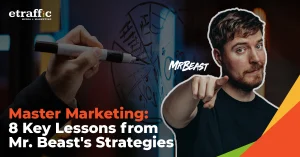![]() Posted by Cameron Francis
on
19 Jun , 2017
in
News
Posted by Cameron Francis
on
19 Jun , 2017
in
News

Change is the only constant. The search industry is undergoing a massive change like the one they did in new search for future events, but when you take a deeper look, it’s obvious that a few things are never going to change.
Search has long been associated with Google. But the surge in voice-based digital assistants like Alexa has definitely impacted this relationship along with search results. The human approach to search has also shifted. In the current scenario, Digital PR company and many marketing teams are making the most out of search with data analysis specialists and even CMOs involved in the process.
Latest industry trends in 2017
– Hyperlocal targeting
– Multimedia results
– Personalized content
– Visual search
– Personalized SERPs
That’s a lot of change as compared to the past few years, right? So how do we go about tackling it?
What’s the solution?
To begin with, do not make the dire mistake of reacting to every single update. The quicker the changes, the slower your reactions and decisions should be. Take time to get things right – remember, your decisions will have a definite impact on your future, so give it a thought.
Tips to prepare for the future
With this influx of change in Google search, you need to be prepared for what the future may bring with it. Given below are a few tips to get you started:
Work on your strategy, but don’t forget technology & psychology
Technology changes much quicker than people. This is why marketers should focus on acquiring insight to the psychology behind the actions of their audience. As search becomes more and more sophisticated, it is vital for you to understand even the smallest elements associated with potential interactions between your brands and customers. No matter how search and search engines change, your customers are going to have the same psychology and requirements.
Gaining insight into the keywords that led visitors to your website is useful – there’s no doubt about that. However, when it comes to working on your strategy, it is best for you to also understand the intent behind using that certain keyword.
To acquire this bit of comprehension, you will have to use technology. Ask people what they are thinking with a humble survey. Scavenge through your CRM, play with analytics and use a CRO software to see what gets customers to engage and/or disengage with your brand.
Focus on your site’s structure
This initiative is meant to help you learn about the requirements and preferences of your customers. In terms of the structure of your website, this is a wonderful resource, as it will help you build on topical hubs for semantically related content.
READ: Improving The Profitability Of Your Site’s Best Content
If truth be told, the logic behind this initiative is rather simple. All you need to do is map out the different sections of your website in such a way that it covers different products and services. Each section should have different landing pages for every stage of the customer journey. This can be applied on your social media profiles and apps as well in case there is space for certain types of content.
The best part about this approach is that it will provide you with the ability to populate your website with different content formats. While transactional pages ask for structured answers to questions, information based pages can benefit from videos and image based content.
Google isn’t everything
Search is a mere vehicle for access to information. The answers may differ by search engine, but the requirement remains the same. Search engines do not produce content – they only have access to information that we provide to them, but they are still a vital link between demand and supply.
No matter how many search engines are introduced, the simple fact is that people want information. While it is important for us to learn about the ways in which Pinterest’s ‘similar items’ feature works, or how Amazon has rose as an e-commerce search platform, it should not suppress our creativity.
READ: Diversify Your Digital Marketing Strategy
Do not focus solely on how your content can fit into Google’s search results. There are multitudes of other search platforms that you can focus on as well. As long as you create something that is worthy and creative, it will get picked up by most if not all such platforms. Content discoverability is basically what you should be concerned about.
READ: Low-Cost Digital Marketing Strategies For Start-Ups That Can Increase Sales By Up To 300%
Your measurement strategy should be flexible
All of the above needs to be measured in a fairly nuanced manner. While you are at it, you need to remember that personalization has plenty of opportunities to offer. With time, personalization will become standard, but this change will bring about a new set of measurement challenges. For instance, static search results will be a thing of the past. How will you measure your ranking performance then?
For reasons such as this, you need to bear in mind the importance of flexibility in the measurement strategy that you come up with. Content that receives links is going to differ from content that gets shared socially, and both of these will differ from content that helps convert customers in greater volumes.
This is why it is necessary for you to communicate your measurement of your seo strategy. All the parties need to buy into the supposedly fragmented nature of search. If truth be told, this is the best approach for businesses and can prove to be most fruitful for search marketers.
To sum it up, the industry is experiencing and will continue to go through a major change. However, these changes are only for the better, and those who know how to maximize on it will definitely reap the rewards.








